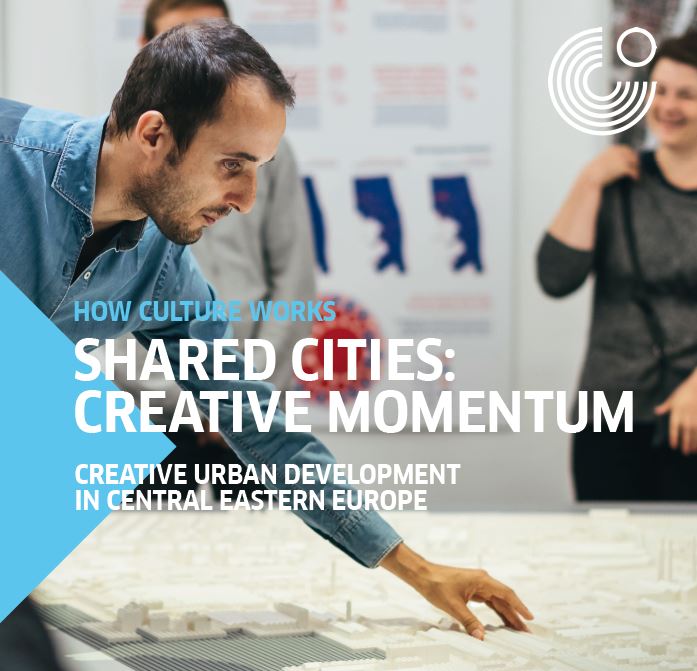
How Culture Works
"DOES EVERYTHING ALWAYS HAVE TO BE ASSESSED?" No. But when cultural work is financed with public funds, there is a necessity to evaluate.
Prague Permanent linkWe are well into the second year of Shared Cities: Creative Momentum. Finally, it feels like the pieces of the puzzle are falling into place. The puzzle is a manifestation of adaptable best practices and alternative tool boxes triggering enduring public participation to shape our Central-Eastern European cities.
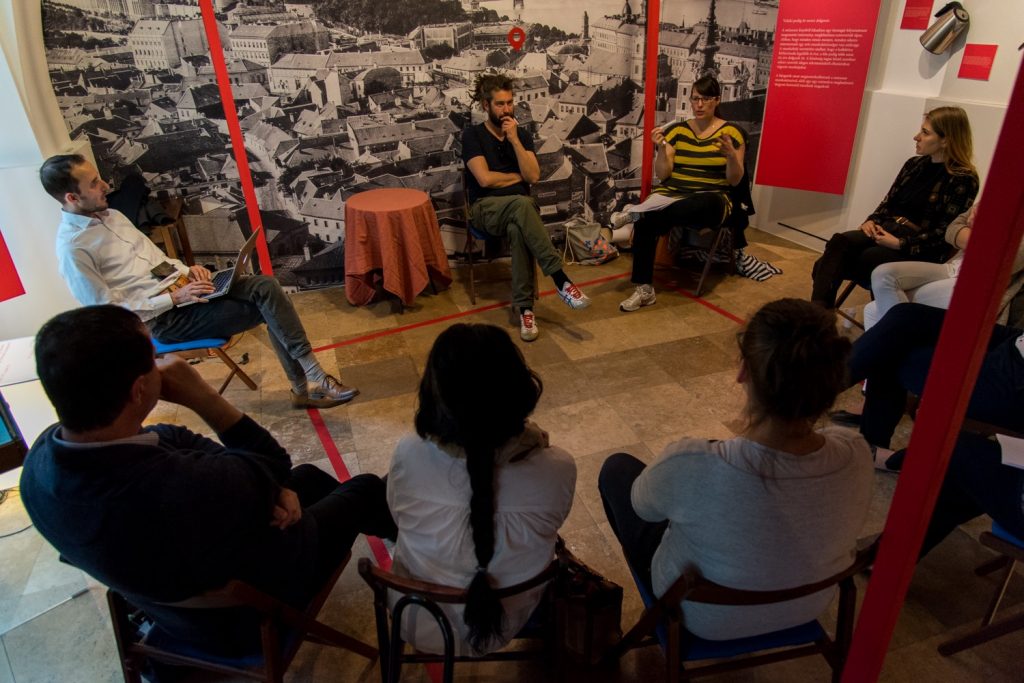
??K??K
Hungarian partners K??K and Mindspace during preparatory workshops, Working with the City ?? K??K
by B??lint Horv??th, Project Manager of Shared Cities: Creative Momentum in K??K
K??K is in a special position among the Shared Cities: Creative Momentum project partners. We share our headquarters ??? Budapest ??? with another SCCM member, Mindspace. This position has considerable advantages when it comes to inter-institutional cooperation and exchange of expertise. Working with the City, a series of workshops, informal talks and gatherings organized for urban cultural institutions and actors in order to strenghten their connections with local communities, is a prime example of such a cooperation.
Working with the City
Working with the City is organized by K??K and Mindspace together, but there are differences in the two organization???s level of focus and how they interpret the concept of working with urban institutions. Mindspace, an active local cultural actor and mediator, focuses on its immediate surroundings – the Palotanegyed in Budapest???s VIII. District. K??K, an organization with wider contacts to professional urbanistic networks, brings together cultural institutions and actors at city-level. These two tracks come together for a number of shared workshops.
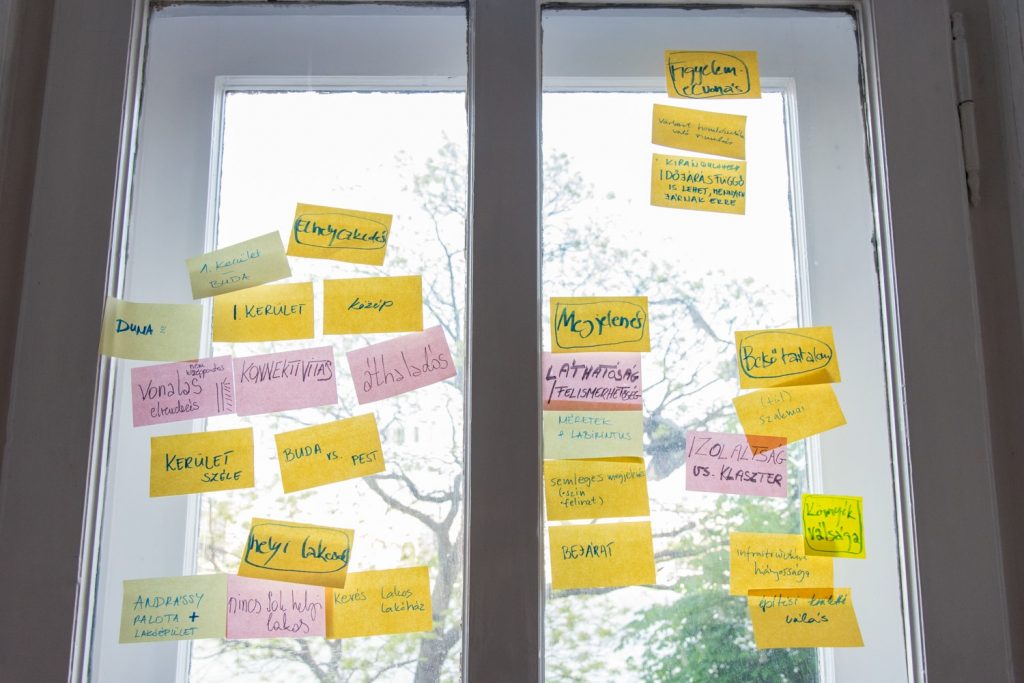
One of numerous workshops of Working with the City, Budapest ?? K??K
Regarding the concept of Working with the City, it is fascinating how it leaves room for different interpretations. We can look at the city as a tool to work with to reach a given goal, as an instrument that drives change. The city can also be, however, an actual object that one tries to shape, just as well as a material with specific qualities which enable different modes of engagement. Since cities are the densest, most complex, and fastest changing sites of human organization, they are full of excellent means (political, cultural and societal communities, movements, NGOs, institutions and so forth) for advancing a variety of societal issues on a global scale. As living laboratories, cities also naturally (re)produce a newer and more intricate set of problems that requires addressing in novel ways and holistic approaches, thus propelling innovation and a state of readiness for constant adaptation.
Yet, there is a third way to think about working with the city. It is to consider the city ??? not its physical carcass (architecture, the underlying infrastructure), but its everyday agents that shape and animate it (individuals, communities, organizations, institutions) ??? as partners to work with. Working with the City, and its parent event Budapest100, as realized by K??K, emphasizes this third interpretation, though the first two still play significant roles.
Budapest100
Budapest100 will be very exciting this year because its theme, Budapest squares, encourages city inhabitants to think beyond their own confined living spaces ??? such as the building they occupy. Moreover, it will also extend its program to surrounding squares to open up new possibilities. Accordingly, Working with the City will focus on urban cultural institutions – museums, educational institutions, libraries, churches, culture houses, NGOs ??? and local small businesses around the 24 selected squares of the Budapest100 program. Under the motto ???Share the Square???, we explore ways in which these urban actors can be brought closer together for experience, knowledge and resource sharing and in which they can connect with their communities and neighborhoods. The aim is to enrich local networks and to enhance the visibility and accessibility of urban institutions.
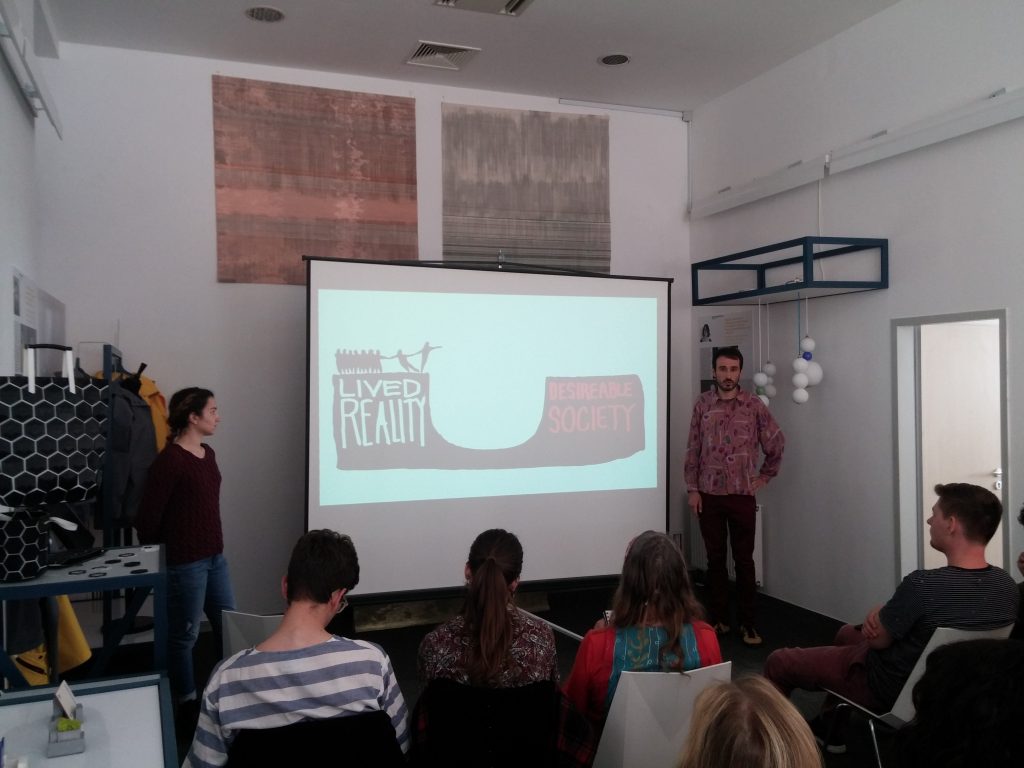
Presentations of Working with the City program, Budapest ?? K??K
Regarding scales, Budapest100 is focused on ground-level: inhabitants of participating buildings and volunteers from all age groups and all walks of life. At the same time, Working with the City and the Csepel Works program are designed for the meso-level. The former engages cultural institutions – both public and independent, locally or globally involved in Budapest. The latter works with small and medium sized enterprises. The macro-level is involved in all three programs, as local municipalities and the Budapest Municipality are approached either as supporters or as discussion partners. See more about Budapest100 and the Csepel Works here.
To conclude, Working with the City is best understood not as a one-time event, but as a series of meetings and workshops that, for K??K, culminate with the Budapest100 weekend. The goal is to develop programmes or specific programme elements with the participating institutions based on their specific real-life problems, assets and visions. However, we hope that Working with the City will go beyond its current spatial and temporal dimensions: the multiple meetings over an extended time span (ca. 3 months) can provide a foundation for long-term partnerships that can be mobilized throughout the year for other projects.
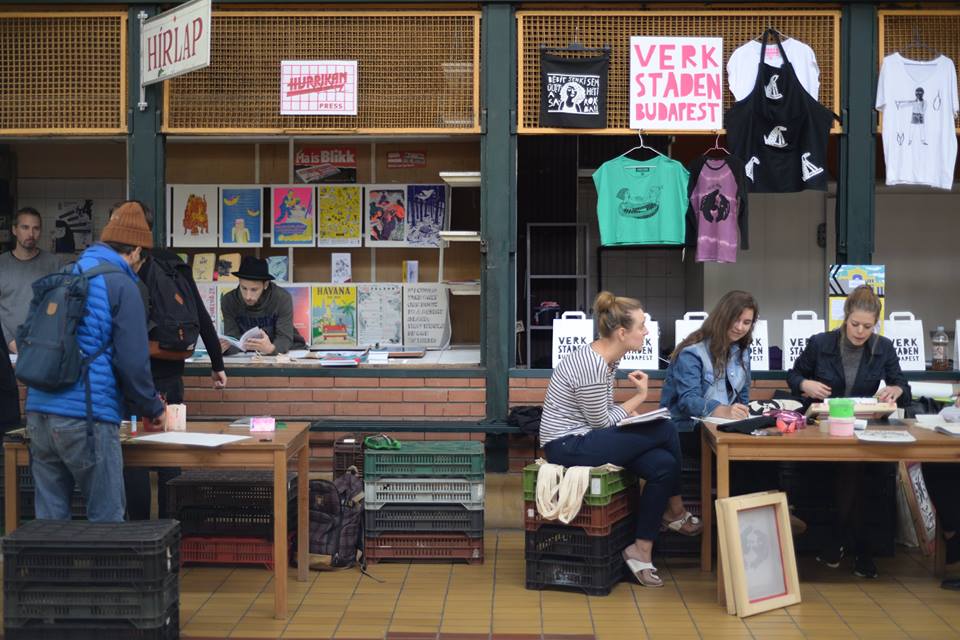
R??koczisquaring cultural intervention by Mindspace, Budapest ?? Gy??z?? Horv??th
??????Rakocziterezes?????? by Mindspace highlights this last train of thought. Although Mindspace has approached Working with the City from a different direction (Na mi van?/What???s up Budapest?), ???Rakocziterezes??? shows the huge potential these events have for re-wiring cultural actors in a neighborhood with each other and with their physical environment. As the process generates interest in the area and a feeling of belonging in the inhabitants of the neighborhood, it has the potential to trigger a revitalization of social connections, cultural functions and the physical environment alike.

"DOES EVERYTHING ALWAYS HAVE TO BE ASSESSED?" No. But when cultural work is financed with public funds, there is a necessity to evaluate.
Prague Permanent link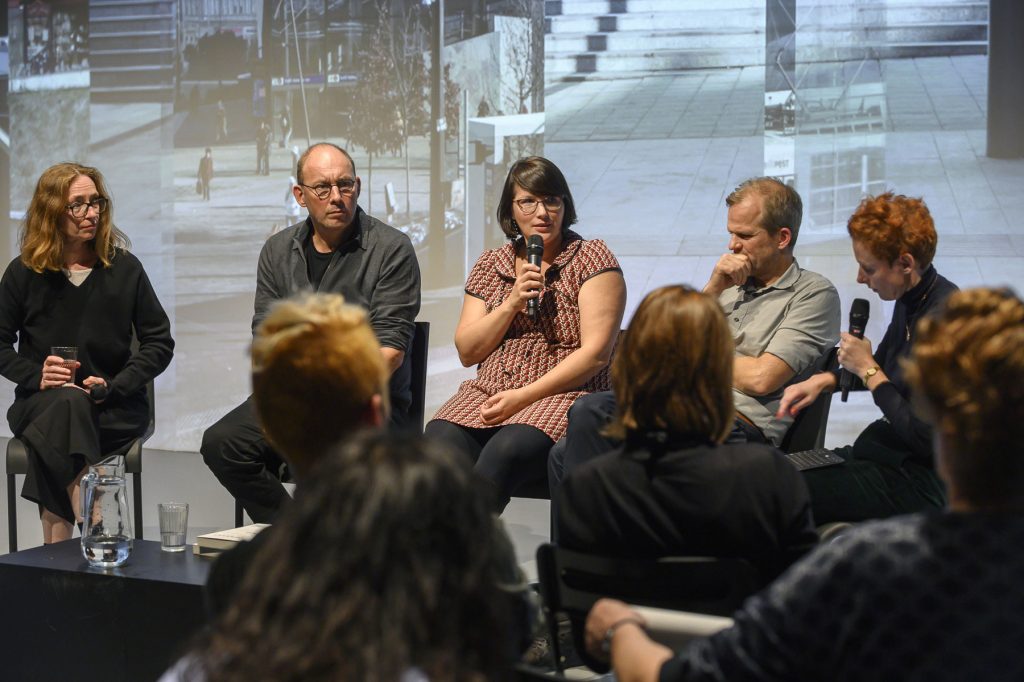
The one-day programme was based on discussion formats with renowned European architecture theorists, curators and urban researchers.
Prague Permanent link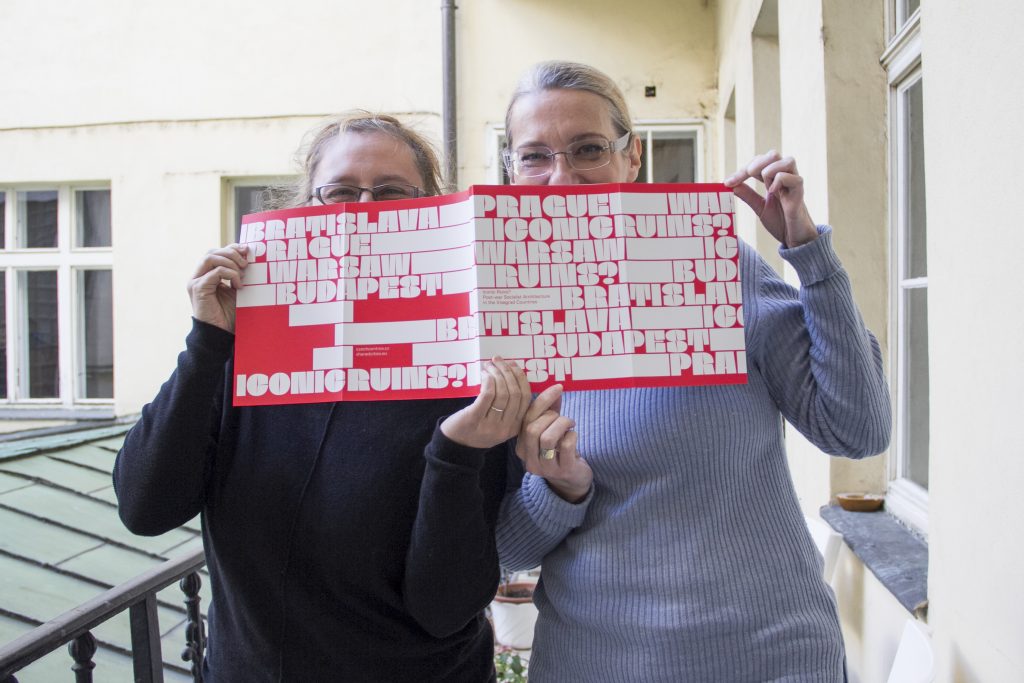
Within Shared Cities: Creative Momentum the Czech Centres realized the "Iconic Ruins?" exhibition and an economic impact evaluation of the project. How does the future of the exhibition look like? What are the benefits of having an economic analysis of the project? Find the answers in the interview with Ivana ??ern?? and Sandra Kar??csony from the Czech Centres / ??esk?? Centra in Prague, Czech Republic.
Prague Permanent link